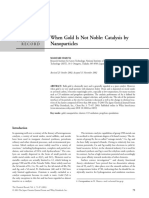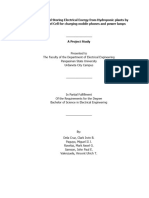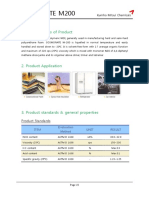The effectiveness of different gold catalysts on the addition reaction was also studied (Table 1).
While 1 was effective at promoting the addition reaction, an arylgold compound bearing a bulkier
Buchwald ligand (2) afforded lower yields of the vinyl ether. Adding an additional equivalent of t-
BuXPhos increased the yield slightly; however, 1 was still a superior catalyst. Increasing the
electron-donating ability of the substituent on the aromatic group attached to the gold center in the
t-BuXPhos based catalyst 3 slightly increased the yield of the vinyl ether.
catalyst package aakash pdf download
DOWNLOAD ⚹ https://tinourl.com/2xy6NX
Hydrophenoxylation of alkynesa,b. aAlkyne (0.28 mmol), phenol (0.56 mmol), 130 °C, 20 min, no
solvent. bIsolated yields. cMicrowave heating with 1 as the catalyst (14.0 μmol, 5%). dConventional
heating with 7 as the catalyst (14.0 μmol, 5%).
Regioselectivity of the addition reaction using arylgold precatalysts. Alkyne (0.28 mmol), phenol
(0.56 mmol), 130 °C, 20 min, no solvent. Microwave heating with 1 or 7 as the catalyst (14.0 μmol,
5%). The yield of the addition product and ratio of regioisomers was determined by 1H NMR
spectroscopy using anisole as an internal standard.
Isolation of the vinyl ethers: The synthesis of the vinyl ethers was carried out following the same
general procedure from the catalyst screening reactions using either 1 or 7 as the catalyst. Once
cooled, the vinyl ethers were purified by column chromatography, dried using molecular sieves
(hexane/EtOAc solution), and isolated as oils or powders following removal of the volatiles.
A range of arylgold compounds have been synthesized and investigated as single-component
catalysts for the hydrophenoxylation of unactivated internal alkynes. Both carbene and phosphine-
ligated compounds were screened as part of this work, and the most efficient catalysts contained
either JohnPhos or IPr/SIPr. Phenols bearing either electron-withdrawing or electron-donating
groups were efficiently added using these catalysts. No silver salts, acids, or solvents were needed
for the catalysis, and either microwave or conventional heating afforded moderate to excellent yields
of the vinyl ethers.
Platinum nanoparticles find significant use as catalysts in industrial applications such as fuel cells.
Research into their design has focussed heavily on nanoparticle size and shape as they greatly
influence activity. Using high throughput, high precision electron microscopy, the structures of
commercially available Pt catalysts have been determined, and we have used classical and quantum
atomistic simulations to examine and compare them with geometric cuboctahedral and truncated
octahedral structures. A simulated annealing procedure was used both to explore the potential
energy surface at different temperatures, and also to assess the effect on catalytic activity that
annealing would have on nanoparticles with different geometries and sizes. The differences in
response to annealing between the real and geometric nanoparticles are discussed in terms of
thermal stability, coordination number and the proportion of optimal binding sites on the surface of
the nanoparticles. We find that annealing both experimental and geometric nanoparticles results in
structures that appear similar in shape and predicted activity, using oxygen adsorption as a
measure. Annealing is predicted to increase the catalytic activity in all cases except the truncated
octahedra, where it has the opposite effect. As our simulations have been performed with a classical
�force field, we also assess its suitability to describe the potential energy of such nanoparticles by
comparing with large scale density functional theory calculations.
The oxidation of adsorbed CO is a key reaction in electrocatalysis. It has been studied extensively on
both extended model surfaces and on nanoparticles; however, correlation between the two is far
from simple. Molecular insight into the reaction is often provided using in situ IR spectroscopy;
however, practical challenges mean in situ studies on nanoparticles have yet to provide the same
level of detail as those on model surfaces. Here we use a new approach to in situ IR spectroscopy to
study the mechanism of CO adlayer oxidation on a commercial carbon-supported Pt catalyst. We
observe bipolar IR absorption bands but develop a simple model to enable fitting. Quantitative
analysis of band behavior during the oxidation prepeak using the model agrees well with previous
analysis based on conventional absorption bands. A second linear CO band is observed during the
main oxidation region and is assigned to the distinct contribution of CO on step as opposed to
terrace sites. Analysis of the step and terrace CO bands during oxidation shows that oxidation begins
on the terraces of the nanoparticles before CO on steps is removed. Further correlation of this
behavior with the current shows that step CO is only lost in the first of the two main oxidation peaks.
94c153d030

























































































